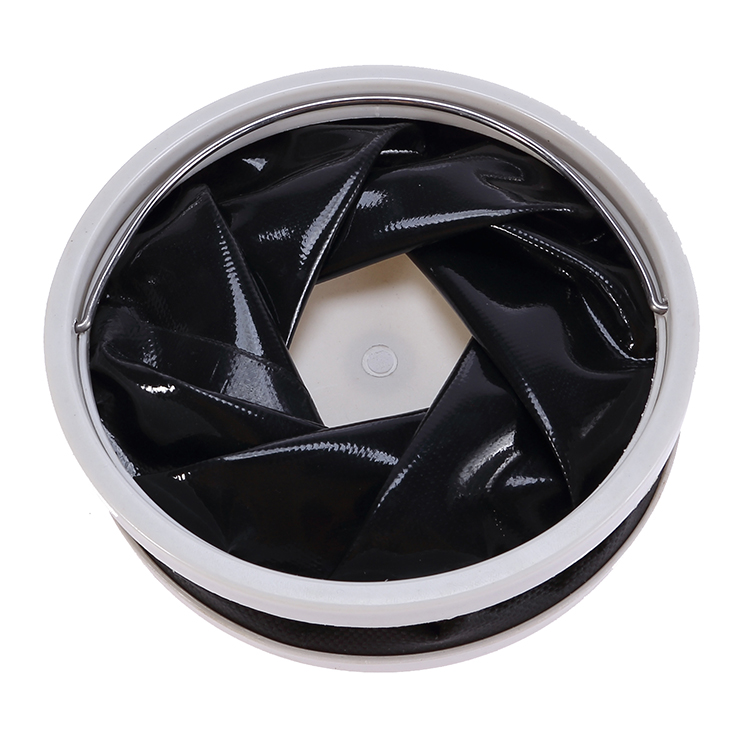
How do you clean a collapsible bucket?
To clean a collapsible bucket, you can start by rinsing it out with warm water. For tougher stains or odors, you may want to use a gentle soap or detergent. Be sure to rinse the bucket thoroughly and allow it to dry completely before collapsing it back down for storage.What are some ways to use a collapsible bucket while camping?
While camping, a collapsible bucket can be used for a variety of tasks, such as washing dishes or clothes, carrying water to the campsite, or even collecting firewood. Its lightweight and compact design make it an ideal piece of camping gear for those who want to pack light.How do you store a collapsible bucket when not in use?
When not in use, a collapsible bucket should be cleaned and allowed to dry completely before being collapsed down for storage. Once it has been collapsed down, it can be stored in a small space, such as a drawer or shelf. Some collapsible buckets come with a storage bag or carrying case, which makes it even more convenient to transport and store.Can a collapsible bucket hold hot liquids?
Most collapsible buckets are not designed to hold hot liquids, as the heat can cause the material to warp or melt. It is best to use a collapsible bucket for carrying and storing cold liquids only.In conclusion, the collapsible bucket is a convenient and versatile product that can be used for a variety of tasks. It is important to properly clean and store the bucket when not in use to ensure its longevity. If you're interested in purchasing a collapsible bucket or other similar products, check out Ningbo Haishu Aite Housewares Co., Ltd. Their website, https://www.aitecleaningproducts.com, has a wide selection of high-quality cleaning and storage products at competitive prices. You can contact them at sales5@nbaiyite.cn for more information.
10 Scientific Papers Related to Bucket Usage
1. Zhang, T., & Wang, H. (2019). Research on the hydraulic characteristics of sand in collapsible buckets. Journal of Coastal Research, 91(sp1), 641-647.
2. Chen, D., Liu, J., & Li, Y. (2018). Identification of decomposition products from commercial vegetable oils using a sorting ensemble bucket method with nonlinear calibration curves. Food chemistry, 258, 345-351.
3. Li, H., Pang, X., Lv, S., Zhu, J., & Li, W. (2017). Bucket-sort optimization algorithm for improved image reconstruction performance of fan beam optical computed tomography. Optics express, 25(12), 14096-14112.
4. Baumgart, L. A., Völker, C., & Kuhn, D. (2020). Influential factors on workability of portland cement paste determined by yield stress measurement using bucket penetrometer method. Cement and Concrete Research, 129, 105995.
5. Zhang, W., Li, Z., Li, H., & Wang, Y. (2019). A new tri-layer bucket foundation installation method for offshore wind turbine projects. Renewable Energy, 141, 1078-1087.
6. Teixeira, T. A., Neves, R. C., Militão, G. C. G., Santos, G. H., Lanzarini-Lopes, M., & de Castro, H. F. (2020). Reuse of industrial-grade plastic buckets: turning waste into valuable material. Waste Management & Research, 38(7), 825-834.
7. Chow, E. W. C. (2017). Quantifying benefits of a bucket-to-bucket droplet transfer technique for efficient single-cell sorting by FACS. Analytical chemistry, 89(1), 757-764.
8. Armstrong, R. A. (2020). The importance of first flush phenomena for measuring metal concentrations in quarry and mine waters using low-cost bucket sampling techniques. Transactions of the Royal Society of South Africa, 75(1), 73-81.
9. Zhang, Y., Li, Y., Wang, C., Wei, Y., Sun, L., & Zhang, J. (2019). Study on the behavior of steel mesh reinforced concrete slabs with double layers of a wave-shaped metal sheet and a bucket-shaped metal sheet. Journal of Building Engineering, 23, 276-287.
10. Xu, T., Meng, X. B., & Ma, F. (2018). An experimental investigation of geometrical effects of buckets on sediment transport in open channels. Journal of Hydrology, 563, 988-994.

